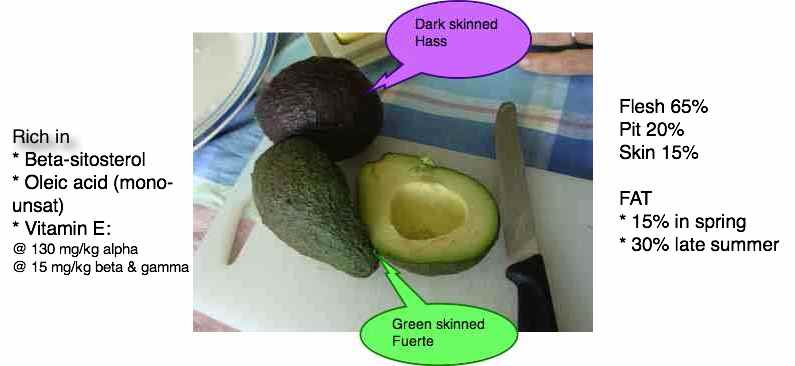- Bernard Preston homepage
- Bread
- Vitamin E Dosage
Vitamin E dosage
Vitamin E dosage was initially known for its ability to prevent sterility. Discovered in the early 1920's by various biochemists in the USA working independently, it was known that feeding rats on a diet of only milk made them infertile.
Adding various other foods made no difference until one researcher discovered that the humble lettuce restored the rats' fertility.
He named the unknown substance in the lettuce vitamin E; perhaps surprisingly only 0.22 mg per 100 grams of the green.
This page was last updated by Bernard-Preston on 8th October, 2025.
It is a fat-soluble compound; actually there are 8 different isomers. Thus is difficult to speculate on the recommended daily allowance; the vitamin E dosage is estimated to be 15mg. These substances are found in much larger concentrations in various seed oils such as that from wheat germ and sunflowers.
Persistent reports suggest strongly that one should get them from whole, unprocessed-foods rather than in capsules; read further for the data.
Tocopherols
There are eight different forms, called isomers but we will mention only two; alpha and gamma tocopherol. Not much is known about the others.
Mixed forms give protection against malignancies.
But many supplements contain only the alpha-fraction and this is now known to increase the rate of prostate disease. Why is that?
Anti-oxidant vitamin E
The vitamin E story is a fascinating cooperation between biochemists but what comes out of it is that these isomers inhibit the oxidation of other molecules; they are reducing agents that are sufficiently stable to neutralise circulating free radicals.
In the process they act as anti-oxidants, giving protection to the cells of the body.
When fats are broken down in our cells, free radicals are produced but the tocopherols protects the membranes against oxidation.
Vital in nerve function, they protect the myelin sheath of the cells. A deficiency causes serious neurological diseases.
It is this antioxidant effect that is thought to give the protection against the muscle wasting[1] associated with frailty syndrome.
Anti-coagulant vitamin E
Anti-coagulants prevent clotting in the blood vessels; vitamin E ranks high on the list.
It is noteworthy that heart disease was almost unknown and certainly myocardial infarction very rare prior to the refining of flour, removing in the process the wheat germ oil and its tocopherols; the lignans too. Vitamin E is an important factor in the anti-coagulation of blood. It helps to stop clots from forming.
Do you have the signs of an imminent heart attack at your finger tips? It could save a life, even yours.
And know that if you have had one heart attack or stroke, there is another coming within a year unless you make radical lifestyle changes, including consuming foods rich in vitamin E. First and foremost though, have a test to see if you are insulin-resistant.
Type "Heart attack" signs and symptoms into the Site Search function above.
Lignans are the phytochemicals that compete with circulating female oestrogen in the body.
Lignans also protect the prostate gland against malignant tumours.
Tingling in arms, hands and legs
Interesting new research done in the Netherlands shows that vitamin E combined with certain fatty acids gives protection against the most awful of diseases; Amyotropic Lateral Sclerosis.
Anti-cholesterol drugs too, not uncommonly cause tingling in the limbs.
- Tingling in arms and hands and legs ...
Vitamin E and the prostate gland
Vitamin E is essential but alpha-tocopherol, the commonest form, on its own increases prostate neoplasms.
The SELECT study found that taking neither supplements of vitamin E nor selenium gave any significant benefit; they have to come from our food to give protection against tumours.
But gamma tocopherol has been shown to prevent tumours, in addition to acting as an anti-inflammatory agent but for this protection the alpha form has limited value; some of the lesser known vitamin E isomers may turn out to be even more effective. Little is known about them.
So the vitamin E dosage of 15mg per day is very speculative.
Different functions
In short alpha and gamma-tocopherol have very different functions:
- The alpha form prevents the production of the damaging free radicals when fats in cell linings are oxidised.
- But it is the gamma-isomer that mops up these free radicals.
Clearly both are needed in the nutritious diet; and almost certainly the other six tocopherols too but this has not yet been defined.
Prostate neoplasms
Prostate neoplasms are the most common terminal malignant disease of men; make sure you are getting gamma vitamin E from your food; selenium and lignans too.
A research project involving a very large group of men showed clearly that gamma-tocopherol gave five times protection against prostate neoplasms but the alpha form and selenium on their own had little or no effect.
The most powerful protection seemed to be when all four were present. Gamma and alpha-tocopherol are necessary; selenium and lignans too.
Alpha tocopherol alone has no value in the fight against prostate disease. In fact there are suggestions that on its own it may increase the risk. Why is that?
Alpha and gamma tocopherol are competing for absorption sites in the gut.
If you are consuming small amounts of the gamma isomer in your diet and flooding the small intestine with the alpha form from capsules, then the latter inhibits the absorption of the protective ɣ-kind; the one that mops up the free radicals that cause prostate neoplasms.
In short for your prostate gland consume foods rich in alpha and gamma-tocopherol. Selenium's richest sources are from rich in mushrooms and avocados; lignans in whole grains and especially freshly-ground flax seeds.
- AVOCADO FAT contains a good mixture of both gamma and alpha-tocopherols.
Type "nutritional value of mushrooms" into the Site Search key above; it's about their rich selenium content amongst many others, including ease of cooking and great taste.
And for more information about the "tomato prostate" link which was discovered when research was done into why Italian men had far less of the malignant disease. These subjects are not small beer; for many it may be the difference between life and death.
Richest sources of vitamin E
1. Gamma-tocopherol
- Corn. Are you planning on planting a garden this summer?
- Soybean oil. Tofu is made from the legume.
- Pecan nuts.
Researchers from Loma Linda University (Journal of Nutrition 2011) state that pecans are particularly rich in the gamma form of vitamin E. They found that LDL (the "bad" cholesterol) decreased by up to 30 percent too. That is huge.
- Pole beans.
Researchers in Poland found that the young leaves of pole beans were particularly rich in gamma-tocopherol but unfortunately there is no information in this research about the seeds and pods.
However Grela et al state that green beans and favas too have significant vitamin E but there is no mention of the alpha and gamma split.
Both growing and cooking green beans are easy in any case; they should be in every garden.
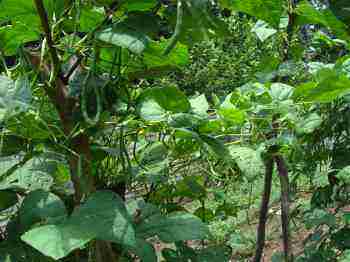
2. Alpha tocopherol
- Cold pressed sunflower oil is particularly rich in tocopherols. Research scientists in Spain found that they were the most important anti-oxidants in the seeds. 90 percent of it was alpha.
But processed, solvent-extracted supermarket sunflower oil has little or no benefit, says researcher, H. Slover; it invariably reduces the tocopherol content, sometimes to insignificant levels.
Every green salad should have a sprinkling of sunflower seeds.
Alpha tocopherol is the most widely distributed, naturally-occurring form in foods. However, as stated above in certain grains and legumes such as corn and soybeans for example, other isomers may predominate.
- 100% wholewheat flour
- almonds
- peanuts are particularly rich in alpha-tocopherol too.
There is no known vitamin E dosage of the various isomers; we have to do our best by enjoying many of these foods.
Vitamin E supplements
In short there are persistent reports that vitamin E supplementation since it usually only contains the alpha tocopherol form, has little value in protecting our well-being; and may in fact increase the risks.
Clearly it is most beneficial to obtain all these vitamin E isomers from natural sources; wholewheat, corn on the cob and sunflower seeds, for example. Tofu, almonds and peanuts are other good provenance; avocados and beans too.
The moral of the story is that sparkling wellness does not come out of a vitamin pill-bottle. It issues forth from eating foods rich in these substances; from as broad a spectrum as possible.
Then you can be assured of getting the vitamin E dosage right.
True wellness bread
Whilst baking your own bread using refined flour can in no way be described as nutritious food, there are few more rewarding dishes from the kitchen than a homemade fresh loaf; sprinkled with sunflower, pumpkin and sesame seeds.
To make it truly a wellness food you have alas to go the expense of an electric flour mill. With an added bread machine, you need just five minutes every day to prepare the dough.
Despite this your divine-tasting nutritious bread costs less than half of
the empty supermarket loaf; the price of that hardware will be
paid back many times over the years.
It takes us less than 5 minutes to mill the flour and measure out the ingredients for our bread; a few moments plus five hours.
- Solar power energy reduces to the cost of baking.
Or make Johnny-bread from your own corn.
Using freshly ground grains, perhaps with the aid of a bread-maker, the wholemeal homemade loaf will contribute greatly to the natural forms of vitamin E dosage.
Do you get very serious diarrhoea? Try this
gluten free bread recipe; personally I would rather go the sourdough route first.
Even better is to come to grips with the meaning of gluten; once you understand a little of the biochemistry you will discover why researchers have found that the majority of those suffering from Coeliac Disease can enjoy bread prepared this way. You too can most likely tuck in.
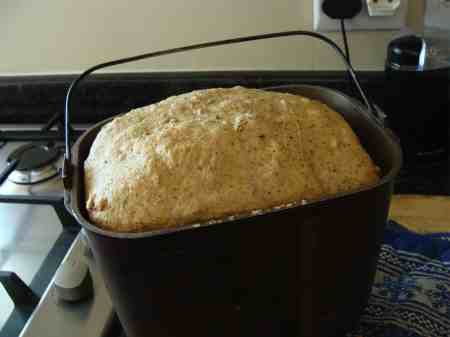
Whilst we make loaves using our twenty-year old Panasonic bread-making machine virtually every day and would not swap it for anything, they are reported to be the most unused appliances in the kitchen. Do not buy one unless you really plan to bake regularly.
Always twiddle the paddle before use; the gland can seize and destroy the mechanism.
Five minutes each time for a delicious hot, nutritious loaf. It tastes so good you will find you have no need to smother it with ham, peanut butter or jelly.
You know that processed red-meat is public enemy number one of the prostate gland, right?
Tocotrienols
Tocotrienols are members of the vitamin E family found in cold-pressed vegetable oils, the germ of the wheat grain and flaxseed; unrefined barley, maize and some nuts too.
Getting the vitamin E dosage right is not that difficult; a wide range of nuts, seeds and whole grains.
They are thought to have even greater anti-inflammatory properties than the alpha and gamma tocopherols.[1]
They are also anti-oxidants.
Those enjoying a broad selection of foods need have no fear of deficiencies. 100 percent whole grains like corn on the cob and real bread are the solid sources where you can get them regularly. The importance of frailty and vitamin E should not be dismissed lightly. This is not small beer.
Toss sunflower seeds on a lettuce salad, freshly-ground flaxseed in a smoothie and green beans; you will have complete protection.
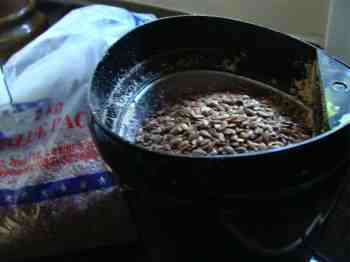 Grind your own flaxseeds
Grind your own flaxseedsChoice foods
If you want to reach eighty and ninety with all your faculties intact, you really have no option; choice foods and plenty of exercise are essential. It is impossible to rank them but an adequate yet unknown mixed vitamin E dosage must be right up there; not in pill form which distorts things but from your nosh.
Choline food sources to prevent birth defects, lutein to keep macular degeneration at bay and tomatoes to protect against prostate cancer are all on the seemingly endless list.
The only solution is a wide range of choice foods. Forget counting calories, milligrams of this mineral and the dosage of that vitamin; you'll go mad.
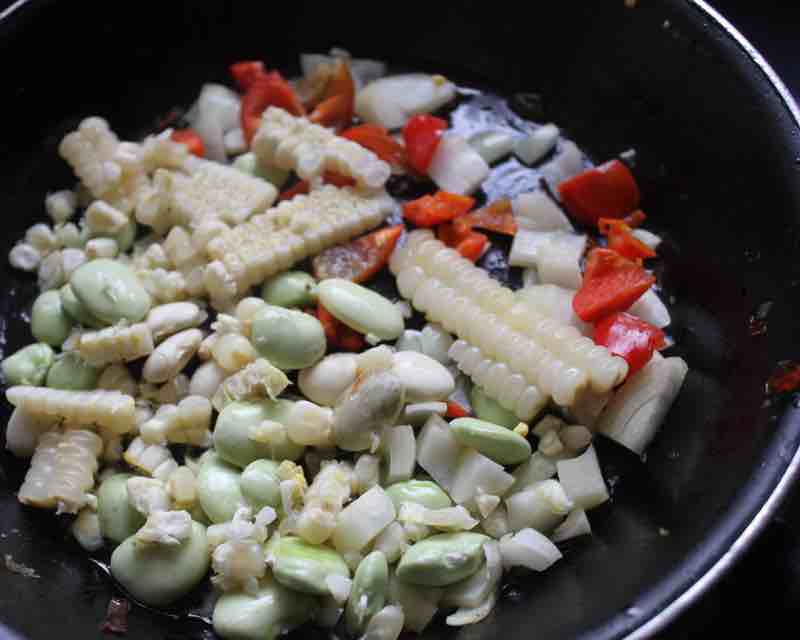 Lima beans and fresh corn are also rich in magnesium
Lima beans and fresh corn are also rich in magnesiumWhat food is highest in vitamin E?
How long is a piece of string? Now you understand that there is no easy answer to the question "what food is highest in vitamin E?" You have to spend time enjoying a wide range of nuts, seeds and beans to get protection against prostate disease and frailty syndrome.
Useful links
When browsing use right click and Open Link in New Tab, or you may get a bad gateway signal.
Newsletter
Our newsletter is entitled "create a cyan zone" at your home, preserving both yourself and Mother Earth for future generations; and the family too, of course. We promise not to spam you with daily emails promoting various products. You may get an occasional nudge to buy one of my books.
Here are the back issues.
- Lifestyle and ideal body weight
- What are ultra-processed foods?
- Investing in long-term health
- Diseases from plastic exposure
- Intensive lifestyle management for obesity has limited value
- A world largely devoid of Parkinson's Disease
- The impact of friendly bacteria in the tum on the prevention of cancer
- There's a hole in the bucket
- Everyone is talking about weight loss drugs
- Pull the sweet tooth
- If you suffer from heartburn plant a susu
- Refined maize meal and stunting
- Should agriculture and industry get priority for water and electricity?
- Nature is calling
- Mill your own flour
- Bake your own sourdough bread
- Microplastics from our water
- Alternative types of water storage
- Wear your clothes out
- Comfort foods
- Create a bee-friendly environment
- Go to bed slightly hungry
- Keep bees
- Blue zone folk are religious
- Reduce plastic waste
- Family is important
- What can go in compost?
- Grow broad beans for longevity
- Harvest and store sunshine
- Blue zone exercise
- Harvest and store your rainwater
- Create a cyan zone at your home
Did you find this page interesting? How about forwarding it to a friendly book or food junkie? Better still, a social media tick would help.
- Bernard Preston homepage
- Bread
- Vitamin E Dosage
Address:
56 Groenekloof Rd,
Hilton, KZN
South Africa
Website:
https://www.bernard-preston.com
